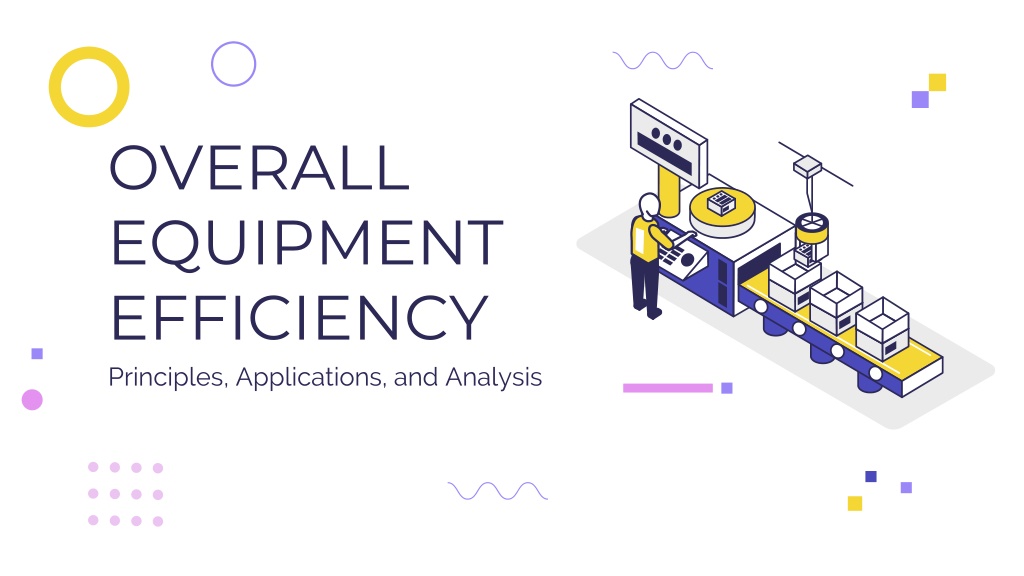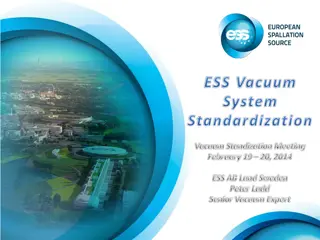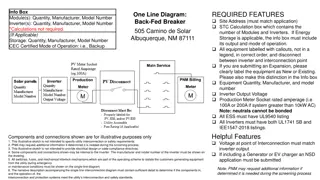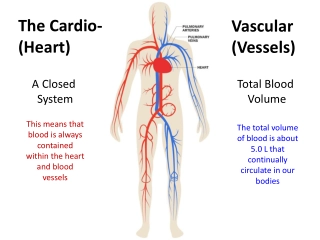OVERALL EQUIPMENT
Explore the principles, applications, and analysis of Overall Equipment Efficiency (OEE) as a key business tool for measuring and improving manufacturing processes. Learn about the history of OEE, its components, calculation methods, and how it drives continuous improvement in operational efficiency.
Download Presentation
Please find below an Image/Link to download the presentation.
The content on the website is provided AS IS for your information and personal use only. It may not be sold, licensed, or shared on other websites without obtaining consent from the author. Download presentation by click this link. If you encounter any issues during the download, it is possible that the publisher has removed the file from their server.
Presentation Transcript
OVERALL EQUIPMENT EFFICIENCY Principles, Applications, and Analysis
You can not improve what you can not measure Peter Drucker/William Thomson
Table of contents 01 02 Understanding OEE OEE as a Business Tool History and Definition Benefits of using OEE 03 04 OEE as a driver for Improvement OEE Calculation OEE Components Analysis, Improvement
01 Understanding OEE
History of OEE The concept of OEE - Overall Equipment Effectiveness was written about by Seiichi Nakajima in 1989
History of OEE Fuji (Holland) Largest investment outside of Japan 3 factories Zero Defects, Zero Loss Arno Koch (US) OEE Toolkit OEE for Operators End of 1990s 1980s 1995 Present SEMATECH (US) Semiconductor Manufacturing Productivity OEE Guidebook OEE Benchmarking
History of OEE Why was OEE needed in the first place?
History of OEE Situation A 10 hr breakdown, after every 90 hrs RUNS 90 HRS STOPS 10 HRS Total: 100 hrs Situation B 1 hr breakdown, every 9 hrs Total: 100 hrs
What is OEE OEE (Overall Equipment Effectiveness) is both a process monitoring and process improvement tool A framework of measuring the efficiency of a process, line, or machine
What is OEE A best practices way to continuously improve the effectiveness of manufacturing processes
What is OEE Takes into account the most common losses, and narrows them down into metrics that provide excellent gauge for measuring where you are and how you can improve
What is OEE Takes into account the most common losses, and narrows them down into metrics that provide excellent gauge for measuring where you are and how you can improve
02 OEE as a Business Tool
Why use OEE It helps us to see and understand the current process and system status. It facilitates in making our improvement plans It helps us measure our performance
03 42% OEE Calculation 58%
OEE COMPONENTS Availability accounts for when the process is not running both Unplanned Stops and Planned Stops.
OEE COMPONENTS Performance accounts for when the process is running slower than its theoretical top speed.
OEE COMPONENTS Quality accounts for manufactured parts that do not meet set quality standards
04 OEE as a driver for improvement
MARK ANTHONY CARO mdcaro@up.edu.ph Project Management Engineering and Maintenance TPM Lean Manufacturing Energy/Environment/Quality Management
















































